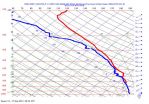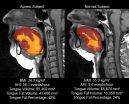Targeted treatment could halt womb cancer growth
2014-10-01
A drug which targets a key gene fault could halt an aggressive womb cancer and shrink tumours, according to research published in the British Journal of Cancer*.
The scientists, from the Division of Gynaecologic Oncology at Yale School of Medicine funded by the National Institutes of Health, showed that the drug afatinib not only killed off uterine serous cancer cells after stopping their growth but also caused tumours to shrink.
The drug, a type of personalised medicine, attacks faults in the HER2 gene which lie at the heart of the cancer cells. This stops the disease ...
Third of countries struggling to meet the needs of aging population
2014-10-01
People around the world are living longer, but social policies to support their wellbeing in later life are lagging behind in many countries. This is according a new report by HelpAge International, developed in partnership with the University of Southampton.
More than a third of countries are falling significantly behind those at the top of the Global AgeWatch Index. It ranks 96 nations on the basis of the quality of life and social and economic wellbeing of older people (over 60s). The Index can also help governments to identify policies and institutional contexts that ...
Developing countries should enroll medical and nursing students from rural areas
2014-10-01
Nearly one third of medical and nursing students in developing countries may have no intention of working in their own countries after graduation, while less than one fifth of them intend to work in rural areas where they are needed most, according to a new study.
Health workforce shortages have been a major factor driving the current outbreak of Ebola in western Africa. The disease initially spread rapidly in rural parts of three of the world's poorest countries (Guinea, Sierra Leone and Liberia), where health workers are scarcest.
The study, which was published in ...
Minimum alcohol pricing would be up to 50 times more effective than below cost selling ban
2014-10-01
The previous policy of setting a minimum unit price would have had a 40-50 times greater effect, particularly among harmful drinkers, say researchers.
Increasing the price of alcohol has been shown to be effective in reducing both consumption levels and harms, and the UK government has been considering different policy options for price regulation in England and Wales.
In 2010, the government announced a ban on "below cost selling" to target drinks which are currently sold so cheaply that their price is below the cost of the tax (duty and VAT) payable on the product. ...
Healthy lifestyle could prevent nearly half of all diabetic pregnancies
2014-10-01
Gestational diabetes is a common pregnancy complication that has long-term adverse health implications for both mothers and babies.
Several modifiable risk factors before pregnancy have been identified over the past decade. These include maintaining a healthy weight, consuming a healthy diet, regular physical activity, and not smoking.
So a team of researchers based in the United States set out to examine the effect of these "low risk" lifestyle factors on the risk of gestational diabetes – and measure the portion of the condition that may be preventable through adhering ...
The Lancet: Latest estimates show that preterm birth complications and pneumonia are the leading causes of death in children under 5 years
2014-10-01
Complications from preterm (premature) births and pneumonia are now the leading causes of death in children under five years, together responsible for nearly 2 million deaths in 2013, according to the latest estimates, published today [Tuesday 30 September] in The Lancet.
Researchers led by Professor Robert Black, of Johns Hopkins Bloomberg School of Public Health, Baltimore, USA, used the latest available data and modelling methods to examine what caused an estimated 6•3 million deaths of newborn babies (neonates) and children under five years in 2013.
They found that ...
The Lancet Diabetes & Endocrinology: Genetic study casts further doubt that vitamin D prevents the development of type 2 diabetes
2014-10-01
A large genetic study, published today in The Lancet Diabetes & Endocrinology journal, has concluded there is no evidence of a causal link between a person's vitamin D levels [1], and whether they develop type 2 diabetes.
The findings of the study, conducted by scientists at the University of Cambridge, challenge evidence from earlier observational studies which suggest that higher concentrations of circulating vitamin D might prevent type 2 diabetes. This evidence led to speculation that the development of type 2 diabetes is associated with vitamin D insufficiency. ...
Improving babies' language skills before they're even old enough to speak
2014-10-01
In the first months of life, when babies begin to distinguish sounds that make up language from all the other sounds in the world, they can be trained to more effectively recognize which sounds "might" be language, accelerating the development of the brain maps which are critical to language acquisition and processing, according to new Rutgers research.
The study by April Benasich and colleagues of Rutgers University-Newark is published in the October 1 issue of the Journal of Neuroscience. The researchers found that when 4-month-old babies learned to pay attention to ...
New genetic 'operating system' facilitated evolution of 'bilateral' animals
2014-10-01
The evolution of worms, insects, vertebrates and other "bilateral" animals—those with distinct left and right sides—from less complex creatures like jellyfish and sea anemones with "radial" symmetry may have been facilitated by the emergence of a completely new "operating system" for controlling genetic instructions in the cell.
That's the hypothesis of molecular biologists at UC San Diego. They report in the October 1 issue of the journal Genes & Development that this new system of controlling gene networks, analogous to a new computer operating system, paved the way ...
First comprehensive meshfree numerical simulation of skeletal muscle tissue achieved
2014-10-01
Engineers at the University of California, San Diego, have completed the first comprehensive numerical simulation of skeletal muscle tissue using a method that uses the pixels in an image as data points for the computer simulation—a method known as mesh-free simulation.
The researchers, led by J.S. Chen, the William Prager Professor of structural engineering at the Jacobs School of Engineering at UC San Diego, presented their findings on the development of this method at the CompIMAGE'14 conference in Pittsburgh this month. Chen also gave a keynote speech about the work. ...
Low social support linked to poor health in young heart attack survivors
2014-09-30
Having few friends, family and a general lack of social support is associated with poor health and quality of life and depression in young men and women a year after having a heart attack, according to new research in the Journal of the American Heart Association.
Social support is the perception of having friends or family who serve as confidants and companions, offer advice and information, show emotional concern, or provide financial or material support, said Emily Bucholz, lead researcher and a student in the School of Medicine and the Department of Chronic Disease ...
Study finds acupuncture does not improve chronic knee pain
2014-09-30
Among patients older than 50 years with moderate to severe chronic knee pain, neither laser nor needle acupuncture provided greater benefit on pain or function compared to sham laser acupuncture, according to a study in the October 1 issue of JAMA.
Chronic knee pain affects many people older than 50 years and is the most common pain concern among older people consulting family physicians. Nonpharmacological approaches are central to managing chronic knee pain, and patients with joint pain frequently use complementary and alternative medicine. Acupuncture is the most ...
Use of a 'virtual ward' model of care does not reduce hospital readmissions, risk of death
2014-09-30
In a trial involving patients at high risk of hospital readmission or death, use of a virtual ward model of care (using some elements of hospital care in the community) after hospital discharge did not significantly reduce the rate of readmission or death up to a year following discharge, according to a study in the October 1 issue of JAMA.
Hospital readmissions are common and costly, and no single intervention or bundle of interventions has reliably reduced readmissions. The virtual ward model of care is a way of providing care to patients with complex needs who are ...
Study compares long-term outcomes for types of aortic valve replacements
2014-09-30
Among patients ages 50 to 69 years who underwent aortic valve replacement with bioprosthetic (made primarily with tissue) compared with mechanical prosthetic valves, there was no significant difference in 15-year survival or stroke, although patients in the bioprosthetic valve group had a greater likelihood of reoperation but a lower likelihood of major bleeding, according to a study in the October 1 issue of JAMA.
Approximately 50,000 patients undergo aortic valve replacement annually in the United States. In older patients, bioprosthetic valves pose a low lifetime ...
Medical professional liability claims and esophageal cancer screening
2014-09-30
An analysis of liability claims related to esophageal cancer screening finds that the risks of claims arising from acts of commission (complications from screening procedure) as well as acts of omission (failure to screen) are similarly low, according to a study in the October 1 issue of JAMA.
Endoscopic screening for esophageal cancer has been recommended for patients with chronic symptoms of gastroesophageal reflux disease, but only if they have additional risk factors. Surveys of gastroenterologists indicate that concern about litigation for missing a cancer may drive ...
Biodiversity in the Mediterranean is threatened by alien species
2014-09-30
Millions of tourists visit the Mediterranean each year, but its deep-blue waters host the largest invasion currently underway on Earth. Almost 1,000 alien species, including fish, crustaceans, and algae are now established from other seas through human activities. In the open-access journal Frontiers in Marine Science, a multinational team of researchers analyzed data from a new information system developed by the European Commission to show how the introduction of alien species has changed the native biodiversity within the Mediterranean.
A hotspot for marine biodiversity, ...
Clinical trial finds virtual ward does not reduce hospital readmissions
2014-09-30
TORONTO — A virtual ward, a new model of care that provides support to high-risk and complex patients in the community for a few weeks after discharge from hospital, did not prevent hospital readmissions as hoped in a clinical trial in Toronto.
Hospital readmissions are common and costly and no intervention has reliably reduced them. Virtual wards, pioneered in Britain 10 years ago, were thought to have the potential to reduce readmissions, but had not been rigorously evaluated by researchers.
Dr. Irfan Dhalla, a physician at St. Michael's Hospital, led a randomized trial ...
Researchers show EEG's potential to reveal depolarizations following TBI
2014-09-30
CINCINNATI—The potential for doctors to measure damaging "brain tsunamis" in injured patients without opening the skull has moved a step closer to reality, thanks to pioneering research at the University of Cincinnati (UC) Neuroscience Institute.
The research team, led by Jed Hartings, PhD, research associate professor in the department of neurosurgery at the UC College of Medicine, has shown that spreading depolarizations—electrical disturbances that spread through an injured brain like tsunami waves—can be measured by the placement of electroencephalograph (EEG) electrodes ...
NASA's Swift mission observes mega flares from a mini star
2014-09-30
On April 23, NASA's Swift satellite detected the strongest, hottest, and longest-lasting sequence of stellar flares ever seen from a nearby red dwarf star. The initial blast from this record-setting series of explosions was as much as 10,000 times more powerful than the largest solar flare ever recorded.
"We used to think major flaring episodes from red dwarfs lasted no more than a day, but Swift detected at least seven powerful eruptions over a period of about two weeks," said Stephen Drake, an astrophysicist at NASA's Goddard Space Flight Center in Greenbelt, Maryland, ...
NASA's HS3 looks Hurricane Edouard in the eye
2014-09-30
NASA and NOAA scientists participating in NASA's Hurricane and Severe Storms Sentinel (HS3) mission used their expert skills, combined with a bit of serendipity on Sept. 17, 2014, to guide the remotely piloted Global Hawk over the eye of Hurricane Edouard and release a sonde that rotated within the eye as it descended and fell into the eyewall of the storm at low levels.
NASA's HS3 mission has returned to NASA's Wallops Flight Facility on the Eastern Shore of Virginia for the third year to investigate the processes that underlie hurricane formation and intensity change ...
Study shows that tongue size and fat may predict sleep apnea risk in obese adults
2014-09-30
DARIEN, IL – A new study of obese adults is the first to show that those who have obstructive sleep apnea have a significantly larger tongue with a higher percentage of fat than obese controls. This may provide a mechanistic explanation for the relationship between obesity and sleep apnea.
Results show that obese participants with sleep apnea had significantly greater tongue volumes, tongue fat and percentage of tongue fat than obese controls without sleep apnea, after adjusting for potential confounders such as age, body mass index (BMI), gender and race. Further analysis ...
Ultrafast remote switching of light emission
2014-09-30
This news release is available in German.
The researchers etched a photonic crystal around several quantum dots in a semiconductor layer. Quantum dots are small structures that spontaneously emit light as a consequence of atomic processes. If a short laser pulse is fired at the photonic crystal, its refractive index is modified and the quantum dot experiences a change in the electromagnetic field around it. This change can speed up or slow down the emission of light by the dot. As soon as the refractive index recovers its usual value, the dot emits light again ...
'Virtual breast' could improve cancer detection
2014-09-30
Next to lung cancer, breast cancer is the leading cause of cancer death in women, according to the American Cancer Society. That's why so many medical professionals encourage women to get mammograms, even though the tests are imperfect at best: only a minority of suspicious mammograms actually leads to a cancer diagnosis.
That results in lots of needless worry for women and their families—not to mention the time, discomfort and expense of additional tests, including ultrasounds and biopsies.
Recently, a different type of test, ultrasound elastography, has been used ...
Rehospitalization in younger patients
2014-09-30
Older adults often are readmitted after hospitalization for heart failure, pneumonia, and acute myocardial infarction, a significant issue that has caused Medicare to target hospitals with high 30-day readmission rates for financial penalties. Older adults are also often admitted for reasons other than the original hospitalization. This vulnerability to readmission has been referred to as "post-hospital syndrome." However, whether younger patients also experience a similar pattern of readmission has not been well studied.
In a large cohort study, Isuru Ranasinghe and ...
Diuretics in proton pump inhibitor-associated hypomagnesemia
2014-09-30
Proton pump inhibitor (PPI) therapy is associated with hospitalization for hypomagnesemia, particularly among patients also receiving diuretics, according to research published this week in PLOS Medicine. The study, conducted by David Juurlink of the University of Toronto and colleagues, suggests that physicians reconsider long-term PPI therapy for patients with a diagnosis of hypomagnesemia or concurrent use of diuretics.
Roughly 145 million prescriptions for PPI are dispensed in the United States annually for acid-related disorders such as dyspepsia and gastroesophageal ...
[1] ... [3175]
[3176]
[3177]
[3178]
[3179]
[3180]
[3181]
[3182]
3183
[3184]
[3185]
[3186]
[3187]
[3188]
[3189]
[3190]
[3191]
... [8701]
Press-News.org - Free Press Release Distribution service.







